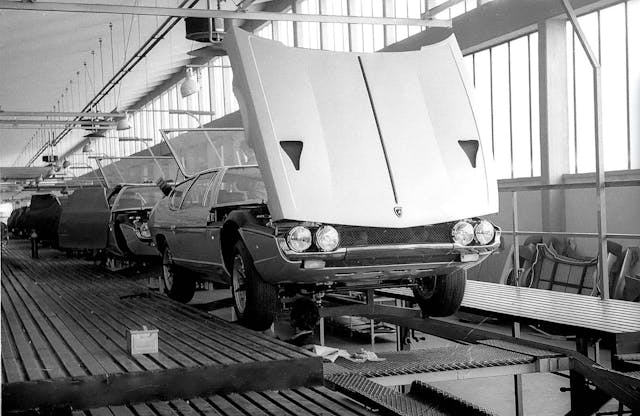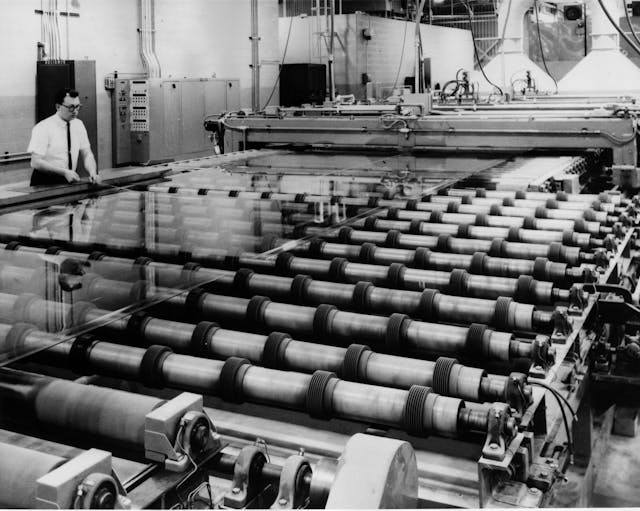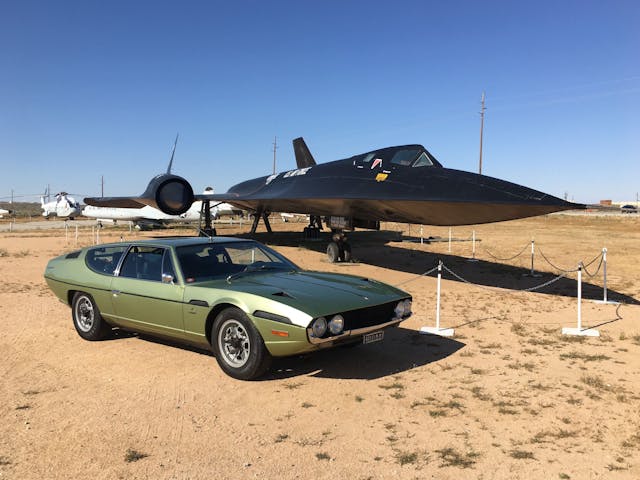Reflections on vintage auto glass
My friend Bob Huber, the Lamborghini restorer, texted me recently. He wanted a picture of the corner of the windshield of my Espada because he’s having some windshields made and he wants to get the factory etching right. He wondered if the glass on my 1970 model was marked with a DOT stamp. Some cars have it and some don’t. The text exchange sent me down a glass-lined rabbit hole.
My windshield mark starts with “Made in West Germany,” followed by the name of the glassmaker, Sigla, an old supplier that also glazed windows for VW, Porsche, and others. Under that is the designation AS-1, which is found on windshields today and is shorthand for the light-transmittance standards drawn up by the American National Standards Institute. The 1 denotes the most clarity, meaning 70 percent of light transmits through the glass, thus making it legal for use in a windshield. AS-2 and -3 glass can be used for tinted side windows. Look on the windshield edge of a modern car and you’re likely to see “AS-1” etched in the glass about two-thirds the way up with an arrow pointing down. That means the windshield is AS-1 below that mark and something else above it, usually because of a shade band across the top of the windshield. Under AS-1 on my Espada’s windshield was “IGM” plus a number, a reference to the Ispettorato Generale della Motorizzazione, basically the Italian department of transportation. That was followed by “M 101,” which is Sigla’s own code for the windshield’s type of construction, including its color and thickness.

No DOT mark. That’s because the Department of Transportation, which was formed in 1966, didn’t get around to mandating a DOT mark on glass until 1973. Regs were coming hot and heavy back then. In his seminal book, Unsafe at Any Speed, Ralph Nader raised the issue of glass safety and specifically distortions caused by curved glass in ’50s and ’60s cars. You can’t say he didn’t have a point; anyone who has driven a ’60s Cadillac knows that the world gets wonky in the corners of its windshield.
Like a tire, glass is one of those car bits that you just have to buy. It can’t be repaired when it’s broken and it usually can’t be made at home. I had to replace the cracked left pane in my ’49 Buick a couple of years ago. Life was simpler in the ’40s, as the glass in most cars was completely flat and therefore extremely easy to replace. Glass shops had huge scrolls of paper with patterns for every pane used in every car under the sun. The scrolls were fixed to rollers at each end of a glass-topped table and the paper fed through. Thus, all you had to do was look up the customer’s make and model in the accompanying book, get the part number, wind the scrolls until the correct pattern appeared in the window, and cut the piece.

Carson Hobson at Street Rod Glass in Riverside, California, has been in the auto glass business since he was 18 (“My dad told me if I didn’t have a job by the end of the week, I had to move out. The joys of growing up in a military family”). Hobson managed to obtain two complete sets of these now very rare scrolls, containing some 2000 patterns each. He keeps one set at the shop and one at home because if the shop burns, “My life is basically those tables.”
Hobson’s cost for glass has risen 300 percent since he cut me the Buick pane for $75. He usually buys about $7000 worth of glass a week, but his suppliers are now rationing him due to supply chain chaos, and since the run-up in gas prices, he’s also paying a 15 percent fuel surcharge on deliveries. Most auto glass and especially curved glass, he says, comes from Taiwan, and a shipping container that once cost $3000 to put on a boat now costs $17,000. Which is why he has over 4000 unanswered quotes for glass sitting in his inbox. No time, no supplies.
“If China invades Taiwan, it will shut the whole glass industry down,” predicts Hobson. “You won’t be able to get glass for your car, for your shop window, for anything.” Well, I hadn’t expected my rabbit hole to end in Taiwan, but that’s the thing about glass: It helps you to see the world more clearly.



We have a table with all the books and patterns. Would you know anyone interested in it?